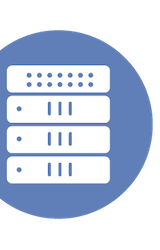Tech Field Day Coverage
Our delegate panel includes independent writers and thought leaders, and we collect their coverage of the event, Tech Field Day presentations, and sponsoring companies here.
Meet Field Day Delegate – Jerod Santo
We recently wrapped on Tech Field Day at NGINX Sprint 2020, which was also the wrap of the first delegate experience for Jerod Santo! Jerod is currently the Managing Editor of Changelog Media and has been writing there since 2013. It was great to have Jerod on board for this unique, live event. If you want to learn a little more about Jerod including his love for trees, check out our post about him! In addition, you can check out Jerod’s work on Tech Field Day at NGINX Sprint 2020 on our website.
Read More:
Meet Field Day Delegate - Jerod Santo
Getting Lost at Networking Field Day
On his newly titled blog “Foggy Bytes,” Josh Warcop writes about the challenges around the consistent context switching in tech and our lives today. He also notes the impressive, 11-sponsor lineup at the upcoming Networking Field Day where he will be serving as a delegate. This will be Josh’s second Tech Field Day delegate experience, and we’re excited to have him back! Check out Josh’s post for his thoughts and all the information about the upcoming Networking Field Day.
Read More:
Getting Lost at Networking Field Day
VAST Data – the Best Is Yet to Come
As a delegate at Storage Field Day, Dan Frith had the opportunity to see VAST Data present at their second Tech Field Day event. Dan writes that the VAST Data presentations were excellent and informative. This isn’t the first time around the block for many in the VAST data team, and that’s helped them quickly evolve, put together helpful offerings, and progress in meeting market needs. If you haven’t seen them yet, check out the presentations from VAST Data on our website!
Read More:
VAST Data – The Best Is Yet To Come
Networking Field Day 23 Is Coming!
Pete Welcher posts some of his thoughts on the most recent announcements for the upcoming Networking Field Day! Pete writes that he is very much looking forward to being a delegate at our jam-packed four day event. In this post, he writes specifically about our two most recently announced presenters: AirVine and IP Fabric! Pete is excited to see them up close and personal in the coming weeks, and so are we!
Read More:
Networking Field Day 23 is Coming!
Has the Cloud Era Arrived? Thoughts From Cloud Field Day 8
With changing times come changing priorities in the tech world. After attending his first Cloud Field Day, delegate Adam Fisher observes that cloud consumption, which was already increasing year-to-year, has exploded in 2020 in the work from home environment. He writes that the Cloud Era has arrived, and recaps some takeaways from his favorite presenters at Cloud Field Day including Veeam, Zerto, Aruba, Diamanti, Infrascale and Morpheus Data. Be sure to check out Adam’s take on the Cloud Era on his latest post!
Read More:
Has the Cloud Era Arrived? Thoughts from Cloud Field Day 8
Nebulon – It’s Server Storage Jim, but Not as We Know It
Dan Frith had the chance to see Nebulon present at Storage Field Day, and was intrigued enough that he had a follow-up briefing with their team to go over their cloud-defined storage (CDS) offering. CDS effectively delivers storage that is defined and managed through the cloud while consuming no server CPU or memory resources. Dan writes that this has a lot of appeal, especially if you anticipate needing to scale up or down quickly. Check out Nebulon’s presentation on their cloud-defined storage offering on our website!
Read More:
Nebulon – It’s Server Storage Jim, But Not As We Know It
Tech Field Day 21: VMware Presents on Many Topics
Pete Welcher, a delegate at Tech Field Day in March, was impressed with VMware’s fast-paced and informational presentations. He writes about VMware’s jam-packed presentations including their focus on automation and orchestration of the datacenter in the cloud. We’re grateful for Pete’s time as a delegate and his recaps of event content from our Tech Field Day events! To check out VMware’s presentations, head on over to our website.
Read More:
Tech Field Day 21: VMware Presents on Many Topics
Bringing It All Together – Aruba Networks; Wifi 6 and #ATMDigital 2020
Mitch Dickey, one of our Tech Field Day delegates, writes in his latest post to summarize the many cool things he has seen so far this year from Aruba Networks. It’s always great to have Mitch on board for our events, and we appreciate the work he put in as a delegate at the Networking Field Day Experience at Aruba Atmosphere Digital this past June. If you missed out on the excellent content that Aruba has presented this year, be sure to check out their videos on our website!
Read More:
Bringing It All Together – Aruba Networks; Wifi 6 and #ATMDigital 2020
News From Cloud Side #5
Lino Telera, a past delegate from Tech Field Day events, writes in his latest post about our September events. Lino takes a look at Tech Field Day at NGINX Sprint 2020 and Tech Field Day Extra at VMworld 2020. We’re always grateful to hear from Lino and look forward to seeing him back as a delegate at Tech Field Day in the future! Be sure to check out Lino’s post and mark your calendars for all of our events happening as we head into the Fall.
Read More:
Host Separation With Tempered
Writing for Gestalt IT, Tom Hollingsworth looks back at Tempered’s presentation from Security Field Day in June. Tempered very quickly got Tom’s attention with their claim that they could secure host-to-host communications while keeping everything invisible on the wire. Tom writes that the Tempered product Airwall is an easy and straightforward solution that supports both network security and privacy. Check out Tom’s article and Tempered’s first ever Security Field Day presentations on our website!
Read More:
Tech Field Day 21: Zerto Saves the Data
Pete Welcher first heard of Zerto from friends a few years ago, and in March he was able to see them up close and personal at Tech Field Day. In his latest post, Pete outlines the features Zerto offers that he finds particularly impressive including continuous journaling and short RPO. With backup staying current down to almost the second, Pete writes that Zerto has gotten his attention. Check out Pete’s post and review of Zerto’s Tech Field Day presentations!
Read More:
Tech Field Day 21: Zerto Saves the Data
Qumulo – Storage Your Way
As a delegate, Dan Frith got to see Qumulo present at Storage Field Day. Dan writes that Qumulo provides their customers the power to handle high workloads, the ability to scale, and the opportunity to see into the platform and know exactly what is going on. Qumulo has caught his attention, and he’ll be following them closely from now on. For Dan’s full analyses on Qumulo’s presentations at Storage Field Day, check out his post!
Read More:
Join Us at NGINX Sprint 2020
Writing for GestaltIt.com, our very own Ashley Broucker shares our announcement of Tech Field Day at NGINX Sprint 2020 from September 15-17! We’re very excited to be partnering with NGINX on this, and hope that you’ll tune in. From keynotes, to surprise presentations, to product demos, to Hackathon, NGINX clearly has a ton in store for us. To learn more about the event, check out the post on our website. See you at Tech Field Day at NGINX Sprint 2020!
Read More:
Register Now for NGINX Sprint 2020 on September 15-17! + HACKATHON
Join us for Tech Field Day at NGINX Sprint 2020 from September 15-17! Christopher Kusek is one of the delegates for this event and in his latest post Christopher outlines the exciting offerings at NGINX Sprint 2020. At this event, the delegate panel will be involved in all three days including Hackathon! We’re excited to see Christopher and NGINX in action, and hope you can join us!
Read More:
Register now for NGINX Sprint 2020 on September 15-17! + HACKATHON
An Intriguing Approach to Modern Data Center Infrastructure
Enrico Signoretti attended Storage Field Day in August and had the chance to see Nebulon present on their Cloud-Defined Storage solution. Enrico writes about composable storage and shares that the concepts Nebulon is adapting are powerful and have the chance to make a significant impact. Enrico is intrigued at their potential and looking forward to seeing where Nebulon and their innovative technologies go in the future. Be sure to check out Enrico’s post and Nebulon’s presentations at Storage Field Day on our website!
Read More:
An Intriguing Approach to Modern Data Center Infrastructure
Pure Storage Announces Second Generation FlashArray//C With QLC
Pure Storage recently announced an all-QLC version of the FlashArray//C and presented at Storage Field Day last month to explain the unique technical capabilities of their new offering. Dan Frith was (virtually) at that presentation and writes in his latest post that the new FlashArray//C could be a compelling option for workload consolidation as it moves to all-QLC. Dan has been impressed with the growing Pure Storage portfolio and will be watching them with interest moving forward. Take a look at Dan’s post and the Pure Storage presentations on their second generation FlashArray//C with QLC on our website!
Read More:
Pure Storage Announces Second Generation FlashArray//C with QLC
Building a Hybrid Cloud for Stateless Virtual Desktops With VMware Horizon on VMware Cloud on AWS
This past Spring there was a seemingly insurmountable mountain of challenges facing companies as they worked to migrate from offices to remote work. Through the transition, it was apparent that virtual desktops could help ease the burden for overworked IT teams. The VMware Horizon on VMware Cloud on AWS is one of the unique tools helping to simplify the transition caused by the pandemic. VMware’s technology makes the transition to and from different workspaces easier and greatly simplifies system updates. With the underlying infrastructure managed by VMware, IT administrators can place their focus and time elsewhere. Check out VMware’s presentations from Cloud Field Day on our website!
Read More:
Building a Hybrid Cloud for Stateless Virtual Desktops with VMware Horizon on VMware Cloud on AWS
Data Protection in 2020
Erik Ableson was a delegate at Tech Field Day in March. As a delegate, he saw the presentations from Zerto on their vision and new product features. Erik writes that Zerto helped clarify his thoughts on different approaches to data protection and he thinks that Zerto is one of the industry leaders in Disaster Recovery solutions. Check out Erik’s blog post as well as the Zerto Tech Field Day presentations on our website!
Read More:
How to Return to Business as Fast as Possible in a COVID World
Haydn Andrews saw the presentations from the last Mobility Field Day and was very impressed with the focus that Cisco and Juniper – Mist placed on helping businesses be better equipped to deal with COVID-19. Haydn writes that through creative utilizations of proximity tracing these companies empower businesses to create safer environments and get back to work more quickly after a potential issue. We’re hopeful that the innovative solutions presented by Cisco and Juniper – Mist at Mobility Field Day have the potential to help us all return to normal a little bit sooner.
Read More:
How To Return To Business As Fast As Possible In A COVID World
Pure Storage Announces FlashRecover
Chris Evans, a frequent delegate at our Tech Field Day events, writes about the partnership between Pure Storage and Cohesity on the new FlashRecover solution. Chris analyzes and reviews the design for the new system as well as the implications for consumers. Be sure to give his analysis a read and take a look at the past Pure Storage and Cohesity Storage Field Day presentations on our website!
Read More:







